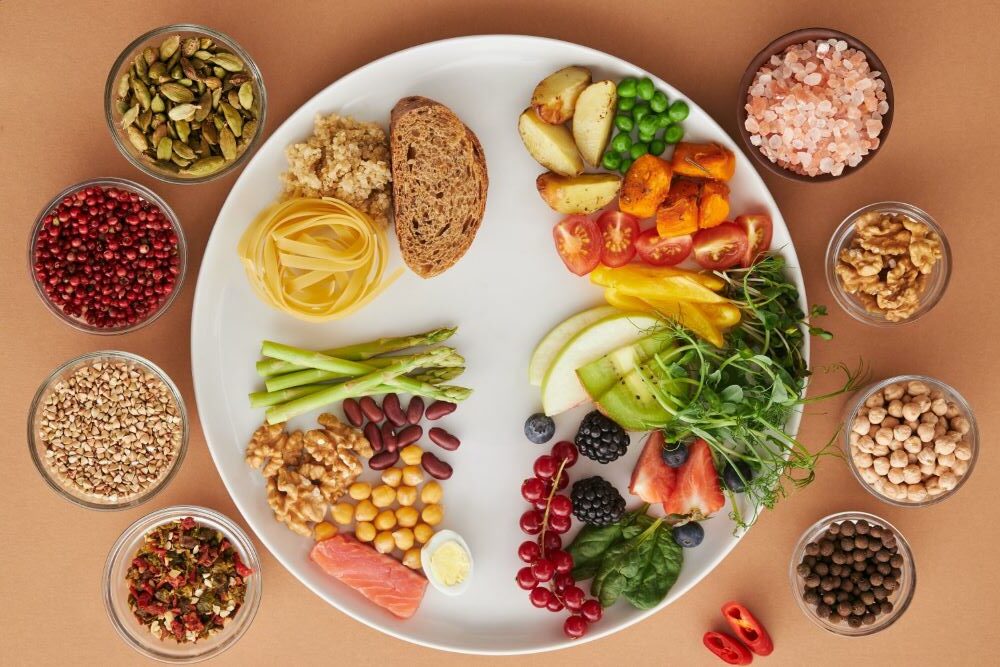

It is essential to treat women’s health problems at an early stage, especially painful menstruations, as their body’s natural doshas are more sensitive to imbalances caused by the physical changes they undergo.
Contents of menstruation pain relief:
- The menstrual pain and the three doshas
- Indications of Menstrual Disorders
- Enhancing Digestive Strength
- Dietary Recommendations and Lifestyle Regimen
- Balancing Vata Dosha
- Balancing Pitta Dosha
- Learn To Calm Your Mind
- Research Insights
- Food and Menstrual Health
First Key: know your body
Failure to follow proper diet and lifestyle practices during menstruation leads to changes in your doshas, especially considering the symptoms present during the menstrual flow, the individual’s body type, and her digestion strength. Imbalances in these doshas during period not only impact a woman’s health but also have consequences for the well-being of future generations.
The menstrual cycle is a natural monthly cleansing process in women. Then, when it occurs regularly, it helps restore balance to the doshas, purify the blood tissue, and maintain healthy reproductive tissues.
Therefore, Ayurveda places utmost importance on maintaining and regulating the menstrual cycle to ensure its normal functioning. This involves paying attention to symptoms, adopting suitable dietary and lifestyle choices, and aiming for a state of equilibrium. By doing so, one can promote overall well-being and support optimal reproductive health.
The menstrual cycle and the three doshas


Kapha dosha serves as a cohesive element, responsible for binding and forming structures. It is closely associated with ojas, the vital energy that nourishes and strengthens the body. Kapha dosha is predominantly involved from the follicular phase until ovulation, supporting the development of the uterine lining.
During the follicular phase, the egg matures, leading to ovulation. If conception occurs, kapha dosha continues to nurture and sustain the uterine lining. It facilitates the implantation of the fertilized egg and supporting pregnancy. And ovulation typically occurs around the 14th day of a 28-day of the menstrual cycle. By the way, this timing can vary by a few days.
Pitta dosha plays a role during the secretory phase of the menstrual cycle. It promotes increased blood flow and fills the blood vessels in preparation for the implantation of the fertilized egg. Additionally, pitta dosha contributes to the rise in basal body temperature that often follows ovulation.
Vata dosha governs movement and activity. In a healthy menstrual cycle, vata dosha ensures smooth and unhindered downward flow of menstrual bleeding, without causing discomfort or obstruction.


Indications of Menstrual disorders:
- Insufficient or scanty bleeding
- Excessive flow or heavy bleeding
- Painful menstruation
- Irregular menstrual cycles
- Low back pain
- Psychological symptoms such as anxiety, fear, mood swings, anger, and stress
- Headaches, nausea, vomiting, and constipation
During menstruation, it is important to follow a diet and regimen that promotes balance in the doshas, supports healthy digestion, and cultivates a sattvic (pure and harmonious) state of mind.
Enhancing Digestive Strength
To have a good agni or digestive fire prevents imbalances in the doshas. When the doshas are imbalanced, women are more likely to experience various menstrual disorders. Insufficient digestive strength can lead to the accumulation of toxins (ama) in the body’s channels, causing obstructions in the menstrual flow and resulting in painful periods. Indigestion can also contribute to symptoms such as headaches, nausea, vomiting, bloating, constipation, and diarrhea during the menstrual cycle.
Dietary Recommendations and Lifestyle Regimen.


To maintain healthy digestion during menstruation, it is recommended to consume light, easily digestible foods that are served fresh and warm. Examples include grams, fried barley, and gruel.
Drink warm water helps promote smooth menstrual flow by reducing abdominal cramps, supporting normal digestion, improving appetite, and enhancing taste.
It is advisable to avoid heavy and difficult foods to digest such as oily dishes, junk food, refrigerated items, deep-fried and burnt foods, fish, meat, and cheese. Also your meals should be consumed at regular intervals, ensuring that the previous meal has been properly digested and skipping meals should be avoided.
Including a small quantity of ghee in the diet is beneficial. Ghee helps maintain the balance of digestive acids, nourishes reproductive tissues, and supports the downward flow of apana vata, thus reducing abdominal cramps, bloating, headaches, and other discomforts during menstruation. Additionally, ghee has a calming effect on the mind as it is considered a sattvic food. Including an appropriate amount of ghee in the daily diet of women can help alleviate stress, anxiety, mood swings, and fear.
Balancing Vata Dosha:
It is important to rest and avoid excessive physical strain during menstrual flow to prevent an increase in Vata dosha, which can lead to symptoms such as pain, abdominal cramps, headaches, anxiety, and mood swings. Excessive exercising, long-distance walking, long travel, and detox treatments like emesis, purgation, and enemas should be avoided.
Late-night sleep and night vigils should be avoided, and natural urges should not be suppressed, as these activities can disrupt Apana Vata, which governs menstruation, ovulation, and conception in women.
The diet for balancing Vata dosha during menstruation includes foods like:
- ghee,
- milk,
- sugarcane juice,
- coconut water,
- almonds,
- bananas,
- pomegranates,
- rice,
- wheat,
- and spices such as cumin seeds, coriander, sesame seeds, and ginger.
Balancing Pitta Dosha:
Intake of spicy, sour, and salty foods should be avoided during menstruation, such as excessive use of chili, tamarind, and pickles. These foods can cause increased menstrual flow, a burning sensation during menstruation, and outbursts of anger.
The diet for balancing Pitta dosha during menstruation includes foods like milk, ghee, green gram, snake gourd, chikoo, pomegranate, almonds, sugarcane, and cumin seeds.
Learn to calm your mind:
The diet, thoughts, and activities we engage in can influence our mental state.
Following a sattvic diet, which consists of light, freshly prepared, warm, and sweet-tasting foods, helps calm the mind, promotes optimistic thoughts, and improves strength and immunity.
Practices such as meditation, inner silence (antar mouna), and pranayama help relieve stress. Mental stress can cause imbalances in Vata dosha, leading to various pains and aches. By reducing stress and anxiety and balancing Vata dosha, pain and discomfort during menstruation can be alleviated, making the flow smoother and easier.
The effects of yogasanas in managing menstrual pain have concluded that yoga and relaxation techniques are effective therapies for managing irregular menstruation and reducing menstrual pain.
Research insights about food and menstrual health:
According to Ayurveda and modern sciences, the quality of food women consume directly affects menstrual health.
When the quality of the nutritious fluid (Rasa dhatu) diminishes, the regularity of the menstrual flow is affected. Menstrual flow is regarded as a consequence of this nourishing fluid, and any decline in its quality leads to an irregularity in the menstrual cycle.
Scientific research has indicated that irregular food consumption patterns can contribute to heightened levels of menstrual discomfort among high school students.
Conclusion:
So, to maintain good menstrual health during teenage years, it is important to eat and drink when hungry and thirsty, avoid skipping meals, eat slowly, include a variety of fruits, vegetables, and dry fruits in the diet.
Also engage in regular exercise and outdoor activities, manage mental stress, ensure sufficient sleep. And include spices in the diet to improve your digestion, and maintain a well-balanced diet (carbohydrates, proteins, fats, vitamins, and minerals).
It is very important to practice meditation and staying centered also beneficial for overall menstrual health.
I hope this will help you better understand the reasons for painful periods, and that you will change the lifestyle habits that need to be modified.
To establish a precise nutritional plan tailored to your constitution and needs, please book a free initial call here.
